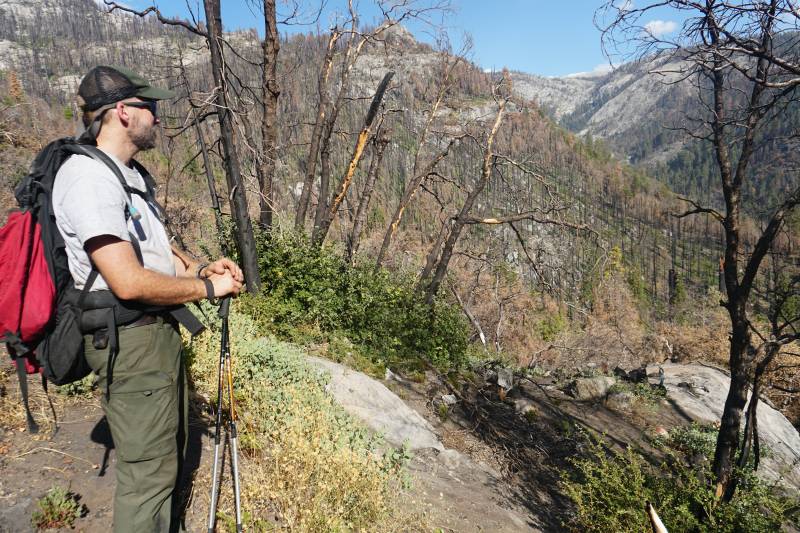When the Castle Fire started burning in August of 2020, it ripped through Sequoia National Park, burning for months and with an intensity that has become increasingly normal during wildfire season. Just one year later, the KNP Complex fire devastated this same region. Together, these two massive fires burned grove after grove of giant sequoias, thousands of the largest trees on earth. Trees found only in California.
Sequoias are adapted to fire, but decades of fire suppression and hotter, drier conditions from human-caused climate change have led to infernos that even these magnificent trees can’t weather. Since 2020, up to one fifth of the state’s sequoias have died from severe fire. Sometimes, the cones that hold their seeds have been incinerated too. Some scientists are worried there will be no sequoias in Sequoia National Park in the future.
Now, national park scientists are proposing a plan to harvest surviving sequoia seeds, nurture them into seedlings in a protected environment, and then replant them in the wilderness. But critics say that proposal goes against the very definition of wilderness. At the heart of this debate are some big questions: What is natural? And how much should humans intervene?
KALW reporter Marissa Ortega-Welch explores both sides of the issue while hiking out to see the damage done to a sequoia grove in the middle of a wilderness area in the national parks.
This story was brought to us by KALW Public Radio, and made possible with support from California Humanities, a non-profit partner of the National Endowment for the Humanities.
